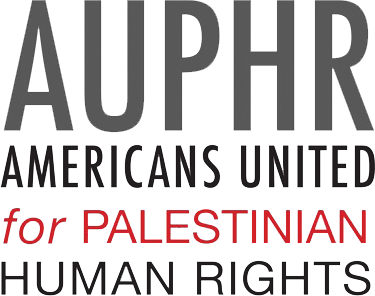Universal Declaration of Human Rights (1948)
- Details
- Category: Historic Documents Historic Documents
 On December 10, 1948 the General Assembly of the United Nations adopted and proclaimed the Universal Declaration of Human Rights. Following this historic act the Assembly called upon all Member countries to publicize the text of the Declaration and "to cause it to be disseminated, displayed, read and expounded principally in schools and other educational institutions, without distinction based on the political status of countries or territories."
On December 10, 1948 the General Assembly of the United Nations adopted and proclaimed the Universal Declaration of Human Rights. Following this historic act the Assembly called upon all Member countries to publicize the text of the Declaration and "to cause it to be disseminated, displayed, read and expounded principally in schools and other educational institutions, without distinction based on the political status of countries or territories."
UN General Assembly Resolution 194 (1948)
- Details
- Category: Historic Documents Historic Documents
 This resolution resolves that the refugees wishing to return to their homes and live at peace with their neighbours should be permitted to do so at the earliest practicable date, and that compensation should be paid or the property of those choosing not to return and for loss of or damage to property which, under principles of international law or in equity, should be made good by the Governments or authorities responsible.
This resolution resolves that the refugees wishing to return to their homes and live at peace with their neighbours should be permitted to do so at the earliest practicable date, and that compensation should be paid or the property of those choosing not to return and for loss of or damage to property which, under principles of international law or in equity, should be made good by the Governments or authorities responsible.
Geneva Convention relative to the Protection of Civilian Persons in Time of War (1949)
- Details
- Category: Historic Documents Historic Documents
 On the UN Website: www.unhchr.ch. Geneva Convention relative to the Protection of Civilian Persons in Time of War. Israel's occupation are in theory governed by the principles layed out in this document, even though Israel's behavior is frequently in violation of them.
On the UN Website: www.unhchr.ch. Geneva Convention relative to the Protection of Civilian Persons in Time of War. Israel's occupation are in theory governed by the principles layed out in this document, even though Israel's behavior is frequently in violation of them.
Read more: Geneva Convention relative to the Protection of Civilian Persons in Time of War (1949)
UN Security Council Resolution 242 (1967)
- Details
- Category: Historic Documents Historic Documents
 Following the Six Day War in which Israel occupied the West Bank, Gaza Strip, the Golan Heights and the Sinai, the Security Council adopted resolution 242, which emphasized "the inadmissibility of the acquisition of territory by war" and called for the "withdrawal of Israeli armed forces from [the] territories occupied in the recent conflict." This resolution 242 became one of the cornerstones of Middle East diplomatic efforts.
Following the Six Day War in which Israel occupied the West Bank, Gaza Strip, the Golan Heights and the Sinai, the Security Council adopted resolution 242, which emphasized "the inadmissibility of the acquisition of territory by war" and called for the "withdrawal of Israeli armed forces from [the] territories occupied in the recent conflict." This resolution 242 became one of the cornerstones of Middle East diplomatic efforts.
The Palestinian National Charter (1968)
- Details
- Category: Historic Documents Historic Documents
 The Palestinian National Charter is the most basic document expressing the demands of the Palestinian national liberation movement. It was adopted by the Palestine National Council in 1968.
The Palestinian National Charter is the most basic document expressing the demands of the Palestinian national liberation movement. It was adopted by the Palestine National Council in 1968.
Palestine Declaration of Independence (1988)
- Details
- Category: Historic Documents Historic Documents
 Faced with pressure from the Unified Leadership of the Intifada, the underground leadership, and by Jordan's disengagement from the West Bank, the Palestinian National Council met in Algiers in 1988, and adopted the Palestinian Declaration of Independence.
Faced with pressure from the Unified Leadership of the Intifada, the underground leadership, and by Jordan's disengagement from the West Bank, the Palestinian National Council met in Algiers in 1988, and adopted the Palestinian Declaration of Independence.
Declaration of Principles on Interim Self-Government Arrangements (1993)
- Details
- Category: Historic Documents Historic Documents
 The Declaration of Principles on Interim Self-Government Arrangements is the main agreement signed between Israel and the Palestine Liberation Organisation. It was signed on White House lawn amid much fanfare in September 1993.
The Declaration of Principles on Interim Self-Government Arrangements is the main agreement signed between Israel and the Palestine Liberation Organisation. It was signed on White House lawn amid much fanfare in September 1993.
Read more: Declaration of Principles on Interim Self-Government Arrangements (1993)
The Road Map (2003)
- Details
- Category: Historic Documents Historic Documents
The following is the text of the performance-based and goal driven roadmap, with clear phases, timelines, target dates, and benchmarks aiming at progress through reciprocal steps by the two parties in the political, security, economic, humanitarian, and institution-building fields, under the auspices of the Quartet. The destination is a final and comprehensive settlement of the Israel-Palestinian conflict by 2005, as presented in President Bush's speech of 24 June 2003, and welcomed by the EU, Russia, and the UN in the 16 July and 17 September Quartet Ministerial statements.
